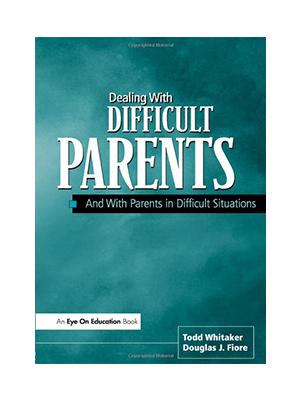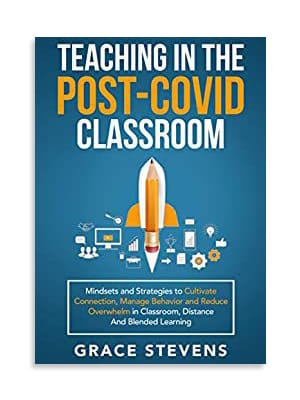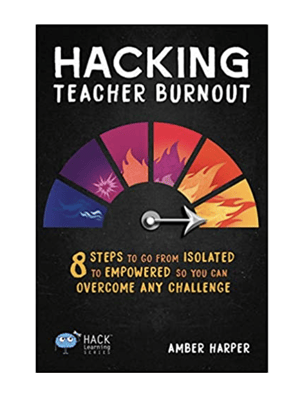Here’s why the teacher shortage is real, and what we can do about it
It’s every administrator’s worst nightmare…school starts tomorrow and there are zero teacher candidates for the classroom.
I’m not talking about a lack of substitute teachers. I’m talking about a lack of qualified teachers. Math classes starting tomorrow and there isn’t a teacher hired yet to teach the course. And in the vast majority of cases, there’s no promise to ever find one.
Except this isn’t a fictional story, it’s happening all over the country.
As the new school year starts, headlines are filled with stories about school districts desperate to find enough teachers.
Just a few headlines out there include:
Vermont’s teacher shortage has schools scrambling to fill positions
Michigan schools Superintendent call teacher shortage ‘substantial’
‘Never seen it this bad’: America faces catastrophic teacher shortage
Just to name a few.
There are tons of stories about the national teacher shortage out there, but fewer people have solutions to offer. I propose to take a look at the entire problem, and suggest a few ways to increase student enrollment. Because I’ve been banging the drum on this for awhile, and I’m scared to think what things will look like when I retire in the next decade.
Why aren’t more people going into education?
Obviously there isn’t just one reason why college students are choosing not to join teacher preparation programs. Although everyone has their own personal reasons, there are a few that stand out.
I’ve posed this question, or similar ones, to my fellow educators (both in person and in social media). Most teachers flat out said they wouldn’t encourage their kids to go into teaching. Lets examine a few of the reasons they most commonly listed.
Low pay
Stop me if you’ve heard this one before, but teachers aren’t exactly the highest paid professionals out there. This one isn’t as simple as that, but overall the profession is one of the lower paying ones for someone with a college degree.
Of course, this can change from state to state, and even inside the state. Where I teach in Illinois, it’s not unusual for teachers to be making $100,000 or more after 20 years. Salaries in the north suburbs can often make closer to $150,000 at the top of the salary schedule. Farther south in the same state, many schools max out at less than $75,000 after 20 years.
Then there are states that have a reputation for lower paying jobs. Places like Mississippi, New Mexico, Arizona, and West Virginia, just to name a few. Places where the salary doesn’t measure up to the high costs required to become a teacher.
These are the lowest states in terms of average salary for public school teachers.
Certification requirements
Typical education programs require teachers to study a large amount of theory, where teachers learn best practices prior to actually interacting with students. The first year is watching someone teach. This is eventually followed by a short amount of time teaching a week or two of lessons. And after all that, then it’s time to do student teaching and spend anywhere from 10-16 weeks teaching a class. For free.
Then you have to usually pass a general teacher certification test, followed by another test in the subject area. Or for many teachers, tests that cover all the areas they will be required to teach (especially difficult for elementary education).
It all takes time to find your way in the profession, and the time spent interacting with students is too little and too late in the game.
The good news is many states facing severe teacher shortages are removing some of the impediments. More on that later.
Increased anxiety for the profession
In recent years, most individuals were already saying they couldn’t handle students. The lack of respect for teachers, combined with students whose attention span continues to shrink, kept most people from taking a closer look at teaching.
School shootings became more frequent, and more publicized. Now it’s required for students of all grade levels to practice active shooter drills. Nothing like spending time in class discussing what items you can throw at a shooter. Or in the case of my classroom, what would we use to break the glass to get out the window?
Then Covid hit, and another level of difficulty was added to the position. Soon masks were required, distance had to be kept, and it became a critical issue to keep everyone safe. And any teacher candidates that were training in recent years had to struggle with zoom classes with cameras turned off and student success defined as turning on their cameras and talking.
It’s honestly not a wonder why there’s an educator shortage, but rather why anyone takes teaching jobs in the first place.
And this is coming from a teacher.
Why aren’t teachers staying in teaching positions?
Teaching has always been a profession with a fair amount of turnover. In a typical year, about 8 percent of teachers leave the profession (Education Week). The education department is still compiling data on teachers leaving the last 2 years, but the estimates lean towards those numbers continuing to climb.
Lack of respect for teachers
It’s amazing how different teachers are treated compared to other professions. I’m not just talking about careers with college degrees here.
I can’t imagine too many people hiring a plumber, then standing over them criticizing what they are doing. The same goes for doctors, truck drivers, lawyers, electricians, etc. And yet everyone seems to remember the one teacher they had that wasn’t good at their job, and suddenly all the teachers sank to that level.
Really? You know more than your child’s educators how to teach? Because you might have already forgotten how bad things were when you were trying to help out at home in 2020 and 2021 while the world moved online.
If all we had to do was actually teach, you’d be amazed at how easy it would be for us. But often we’re stuck in pointless meetings, with leadership that has such a high turnover rate that we repeat meetings from year to year, all while installing initiatives that we know will fail because we already tried it a decade ago under another name.
Lack of protection for the profession
There was a time in the past decade where most teachers felt they had the full support of the parents, administration, and school board. I feel like every school district talked about being a family, and that they’d always take their side when they were doing what it took to work in a profession full of so many gray areas.
Those times are long gone, and now it’s not unusual for teachers to lose their jobs or be put on administrative leave for dealing with student behavior issues. Instead of asking what the student did wrong, the question usually begins with what the teacher did wrong.
I’ve seen investigations all too often dealing with white teachers breaking up fights involving minority students. Or worse yet, guys trying to break up girl fights. There’s just too many issues that arise, and in many high-needs schools student behavior has been a mess lately.
It’s a tough situation, and it’s not unusual for teachers to simply watch fights happen instead of intervening. Which means that the behavior issues escalate, and it continues to spiral out of control.
Better options
You simply can’t blame someone for improving their status in life. And since so many companies are recruiting teachers, it’s only accelerated the teacher shortage crisis. Companies across the country are realizing that there is a huge number of teachers who are underpaid and hardworking individuals. People who’ve been used to doing less with more. And teachers are taking advantage of this opportunity, cashing in on financial incentives from these companies.
But it’s not just the higher wages that are drawing the teachers away. It’s not having to spend a large portion of their salary on supplies, since there’s a budget that exceeds their whole department’s spending back at their high school.
Lunch is often paid for, or at least allows you to spend more than 25 minutes scarfing down your food while avoiding screaming kids in the hallway.
And going to the bathroom anytime you feel like it. Enough said.
How does the shortage of teachers impact the US?
Unlike most professions, the teaching profession is not under the same market pressures as many jobs.
In most professions, a lack of available labor would lead to an increase in salaries. This would continue until the supply stabilized to meet or exceed the demands.
But the education system typically doesn’t work like that. A shortage now can’t be filled by prospective teachers who don’t have the necessary degrees and certifications to fill academic areas that are in the most demand.
Consider it this way: there is a huge demand for teachers, but that demand isn’t equal across all subject areas.
A few areas that currently are the most needed:
- Special education
- ESL/ELL
- Anything STEM related
- Vocational
- Speech pathologists
- School nurses
- Foreign language
- Early childhood education
So if you teach social studies, you’re out of luck. World languages, a better chance. English or PE, forget it. Except in some areas of the country, because in some areas those are hard to find as well.
Legally, teaching a subject you aren’t certified in usually isn’t allowed. It makes sense, you don’t want the history teacher explaining thermodynamics. Not saying they couldn’t do it, but it would be a little bit tougher.
Which brings up another issue many people don’t realize. It’s that many teachers are specialized inside their content areas. Not all science teachers can teach all science classes without taking certification tests. Same thing with social studies, without the right degree title you could be limited in what you could teach. (I currently can teach US History, World History, Consumer Economics, Civics, and Drivers Education).
So if it takes that long to train teachers or other staff for their positions, and those positions are already desperate for candidates, it doesn’t take a rocket scientist to figure out that something has to give.
What can be done to bring in more new teachers?
Of course the first priority is always to keep the teachers that you have in the profession. But every year there is going to be some turnover, even in an uneventful year. Education statistics generally agree that the number of teachers leaving the profession is typically anywhere from 6 to 9 percent. So there will always be a need to bring in new educators.
So the U.S. Department of Education, in combination with state entities, needs to do a better job selling the positions to new candidates. So let’s look at a few ideas that could help.
Highlight job security
Traditionally, teaching has actually had a few benefits many professions lack. The problem is that an economy that is going full strength doesn’t highlight those strengths as much. But this may be changing.
Consider job security. During the great resignation, people have been flocking to jobs that allowed them more freedom to choose their own work environment. Combined with higher pay in many cases and plenty of job openings, it’s no wonder the supply of teachers currently in the classroom is dwindling. However, the economy tends to go in cycles, and we instead start to talk about the great recession, jobs with more security tend to look better for many individuals.
And let’s face it, the number of people fired from a teaching job during the year is a minuscule number. In most school systems, a bad rating outside of the first 3 years of teaching will put you on remediation. Like it or not, this means that typically as a teacher you have at least a 2 year window of safety with your job.
Increase teacher salaries
This is one of those topics that sounds great, but at the end of the day isn’t easy to implement. Teacher salaries are primarily made up of tax dollars from a variety of sources, and no one wants to raise taxes. This is especially true in high-poverty schools, where a larger chunk of the money comes from the federal government. Many federal programs are designed to make up for the lack of support from local taxes to deliver a better public education.
Overall though, most tax dollars come from the local community and the state level. It’s no coincidence that states with higher taxes tend to pay their teachers better.
Consider this: Arizona has one of the largest numbers of teaching vacancies, some of the largest class sizes, and is consistently at the bottom in terms of teacher compensation. And there’s no state income tax.
If you are looking to increase your teacher salary, check out our continuing education graduate courses here.
Put more emphasis on hiring minorities
Although there has been a slight increase in many areas when it comes to hiring minority educators, the vast majority of schools are still more diverse than their teaching staff. Simply put, students of color are often taught by teachers who are white. Although we could spend a lot of time diving into the reasons this is the case, that’s not our purpose here. The question is simple, what can be done to continue to improve in this area?
One step is to create more programs that are specifically designed to bring in minority candidates for teaching. This is something that has already been started in many states, but could be pushed further with an education policy from the national level.
Another huge need is ESL or ELL teachers and support staff. Rather than waiting for people to learn a second language so they can chip in, why not streamline the process to hire individuals who already speak 2 languages but don’t have the requisite degree? I’d argue that they could do the job of translating and helping students understand what is happening in the classroom without a 4 year degree. Student outcomes are being hindered, and there just aren’t enough qualified people to help.
Large school districts, who often have the largest number of minority students, also need to explore more programs to encourage growing their own teachers.
Relax requirements to teach
As hard-pressed districts become the norm, states are starting to relax their standards to enter the profession.
- Arizona is allowing students to learn to teach while they are teaching (Senate Bill 1159), allowing more options for public schools and charter schools to find educators.
- California is skipping basic skills tests and subject specific tests in subject areas to promote teacher recruitment. Teacher certification can be achieved by getting a C or higher in approved courses.
- New York state is discussing the removal of teacher certification tests, which have a reputation for being difficult to pass. Simply put, teachers are choosing an easier path in nearby areas.
- And there are similar stories in Alabama, Oklahoma, New Mexico, and plenty of other states.
While some will argue this is diluting the quality of teaching, others would say we’re past the point where we can be picky. Beggars can’t be choosers as they say.
This may be an unpopular opinion coming from a teacher, but for the most part I actually agree.
Most of what I learned about teaching happened in the classroom I was leading, not the one where I was a student in higher education. This isn’t to disparage educator preparation programs, but rather to point out that there are untold numbers of adults who haven’t gone through years of education but would still be fantastic educators.
There are plenty of military veterans who are retired but still have plenty of great years to give to a profession, and already demonstrate leadership values and discipline that many of our students are lacking.
And what about those in professions that are tougher to age out of? Surely there are plenty of people in the trades who are finding it difficult to do the same activities in their 40’s and 50’s that they used to do in their 20’s and 30’s. All that is missing is a competitive salary.
Give back control over the curriculum
Teachers across the United States are struggling to keep up with constant changes in the curriculum they are allowed to teach. States require new courses, not considering all the complexities in creating schedules and fitting it into graduation requirements.
Then there is the need to make sure that absolutely no one is ever offended by what is being taught. This of course is impossible no matter what you do, unless you make the lessons so vanilla that the students will lose all interest.
It seems that the public believes that students aren’t able to think for themselves, and are more likely to follow their teachers’ lessons than their parents. Unfortunately, I don’t believe that teachers or parents today are the number one influence on students. I also don’t think they ever were…
Improve working conditions
The first day of school in most districts means sitting in rooms that are overheated. In the winter they’re freezing. When it rains the rooms are flooded.
Then there’s a lack of support all too common for dealing with the ugly realities that happen in schools. Fights happen, and it’s either watching kids beat each other up or jump in and break things up. I’ve been there, teaching in the south suburbs of Chicago isn’t always a picnic.
I believe our record is 6 fights in one day, but don’t quote me on that.
Teachers need to know they’ll be supported, because when they stop doing their jobs in the hallways, the hallways get out of control.
Start providing more perks to attract teachers
This will sound crazy to any retired teacher, but districts are borrowing tactics from other job sectors to attract more talent.
Daly City, California, is offering affordable housing for teachers. They built housing, and 25% of that is set aside so teachers there can afford to live where they teach.
Another option being floated around by the US Department of Labor includes paying student teachers as apprentices. Usually student teachers are running classrooms just like a teacher, just not getting paid. For adults looking to jump into teaching, this is a killer, as it’s hard to do student teaching all day without pay and still make ends meet.
Or even instituting a 4 day work week, as many rural schools in Texas are doing. It’s worth noting that most stories are about big school districts, but this one highlights that teacher shortage areas include rural areas as well. It’s also worth noting that this only works if all the other schools stay on the 5 day schedule. Otherwise there is no competitive advantage.
Final thoughts
It’s been a tough couple of years for the field of education.
There’s a large number of teachers getting ready to leave the profession, for a variety of reasons. The years of teacher layoffs are in the past, now it’s a fight for the shrinking number of potential candidates.
And it’s a game that rural schools won’t be able to win, as they won’t have the resources to compete with larger districts in urban centers.
All American progress starts in the classrooms, and without some drastic moves we’ll fall behind as a nation and decay from the inside out.
It’s time for a large, all hands on deck scale of movement. It’s the fourth quarter, and we’re falling farther behind. Use whatever analogy you want, in the end it doesn’t matter if action isn’t taken.

























